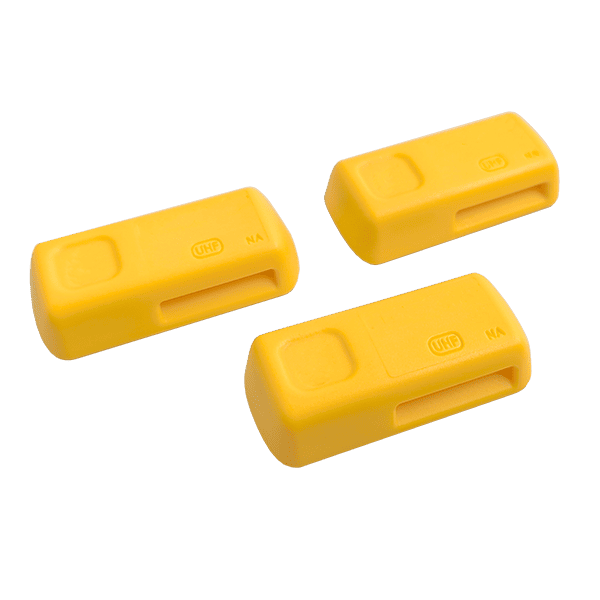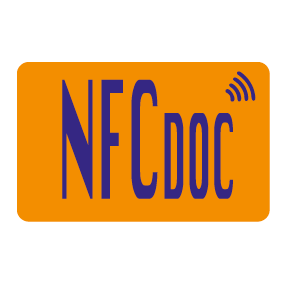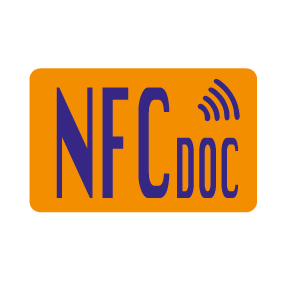Xerafy DUALBAND is a robust RFID tag engineered for efficient identification and tracking of cylindrical industrial assets. Featuring Dual Frequency capabilities and an extended Read Range, it is ideal for applications in Utilities & Infrastructure and Renewable Energy sectors

The Xerafy DUALBAND is a robust RFID tag engineered for efficient identification and tracking of cylindrical industrial assets, even in demanding environments
technical description of xerafy DUALBAND
- Dual Frequency: Operates on both UHF and NFC frequencies, enabling versatile applications across different systems.
- Material: Constructed from high-impact materials for durability and resistance to harsh conditions.
- Temperature Resistance: Operates within a range of -40°C to +85°C, ensuring reliability in extreme environments.
- Chemical Resistance: Designed to withstand exposure to industrial chemicals, depending on concentration and application.
- RF Protocol: EPC global Class 1 Gen 2, ISO 18000-6C, with frequency ranges of 902-928 MHz (US) and 865-868 MHz (EU).
- Memory: Features 96 bits EPC, 48 bits TID, and 688 bits user memory.
- Read Range: Provides efficient reading capabilities for both UHF and NFC frequencies.
- Mounting System: Engineered for easy installation on cylindrical assets, ensuring secure attachment.
- IP Rating: IP68, offering protection against dust and water ingress.
This tag is particularly suited for industries such as oil and gas, mining, renewables, and energy. Let me know if you’d like to explore its applications or related technologies further!
applications
The Xerafy DUALBAND RFID tag is designed for versatile applications across industries, thanks to its dual-frequency capability (UHF and NFC). Here are its key uses:
- Oil and Gas Industry: Tracks cylindrical assets like pipelines and valves, ensuring efficient operations and maintenance.
- Renewable Energy: Monitors equipment and assets in wind and solar farms for streamlined asset management.
- Mining and Construction: Ideal for tracking heavy machinery and tools in rugged environments.
- Utilities & Infrastructure: Used for monitoring towers, cables, and other critical infrastructure components.
Its ability to operate on both UHF and NFC frequencies makes it adaptable to various systems and environments.
RFID TAG ROSWELL SERIES
The Xerafy TRAK series offers cost-effective inventory RFID tags optimized for identification in the Warehouse, the Factory, the Data Center to deliver real-time visibility into every workflow and lifecycle.
The passive RFID tags for inventory management leverage Xerafy’s field experience with inventory tracking applications and how to meet their requirements and challenges in the field. They offer durability and performance for lower deployment costs and can be combined with the OUTDOOR long range tags and METAL SKIN printable labels series.
“Xerafy is a highly regarded specialist in the field of RFID for mission-critical applications, and their Global Trak RFID tag came out on top of our evaluation.”
How to customize
Standard tagging solutions that are fully personalized for RFID systems, to the exact specifications of the critical assets and equipment they are tracking.
Service Bureau customization options are available to mark and program RFID tags.
On the other hand, RFID labels printing can be done in the field or taken care of by the Service Bureau.
And for unique requirements and features, it is also possible to custom build a tagging solution.
Applicable for tags: Versa TRAK, Data TRAK II, Slim TRAK, Global TRAK
Customized using physical markings to feature an asset identification number, a barcode, or a logo for instance.
Custom asset tags can be custom marked in the field, or be taken care of by the Service Bureau of the manufacturer or distributor.
encode
Programmable tags use RFID chips that are specifically designed with memory that can be written.
This allows for the tags to be encoded with custom EPC ranges for unique identification, serialized or unserialized.
The quantity of information that can be encoded will depend on the specifications of the chip being used.
RFID Engineering
Can be designed specifically for a tracking system’s application and deployment requirements: Form factor, material, mounting system, read range, accuracy, user memory, fixed and/or handheld RFID readers, on-site printers and encoders, software configuration.
Connected assets are an example of custom-built RFID tagging solutions that refer specifically to equipment that OEMs have designed with RFID and IOT features built-in.
If you need more details about this specific subject, MAIL TO
SELECT THE PRODUCT OF YOUR INTEREST (sib)




